Datura creatures
There are several sacred datura (Datura wrightii) plants in our garden, thanks to N&M who gave them to us as seedlings. This beautiful but poisinous native plant has large, fragrant white blooms at night, which attract hawkmoths.
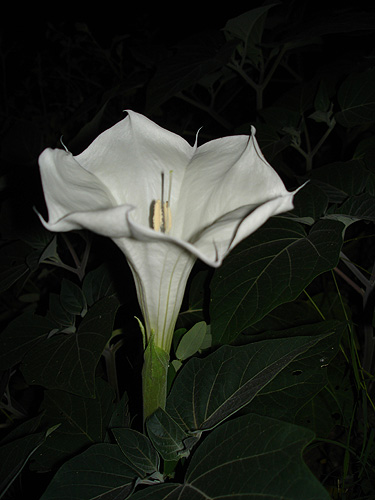
This is one of our 8-inch flowers that bloomed last week.
Manduca sexta hawkmoths are one of the main pollinators of the plant as adults, and one of the main herbivores as caterpillars. I could go on in detail about this interesting interaction (after all, it's one of the main research focuses in our lab), but instead I thought I'd write a little bit about another peculiar herbivore I found on the datura in my yard.
What could this be?
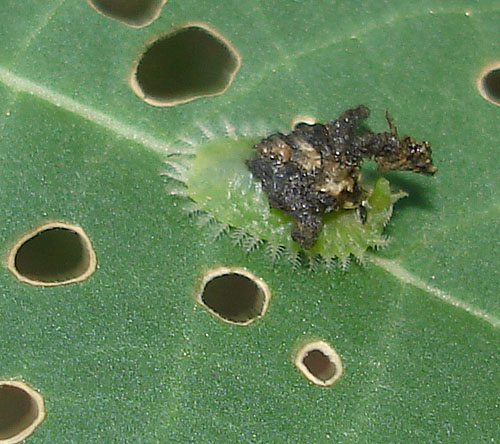
I must admit that even with my background in insects, I was puzzled when I first saw them. Here's another shot. The green creature is holding a dark, crusty object up as a shield, quickly blocking me as I poke it with a piece of grass.
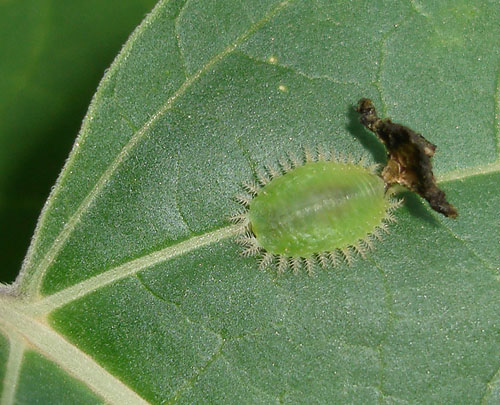
The answer is that these are Tortoise Beetle larvae (family Chrysomelidae, subfamily Hispinae.) The larvae use special appendages on their hind end to hold an 'umbrella' of excrement and shed skin above their bodies. They use this shield to quickly block predators like ants and biologists with pieces of grass.
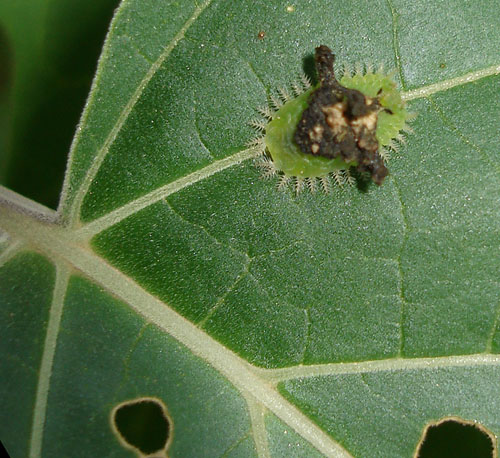
I was very curious to find out what the pupal stage of these bizarre creatures would look like. I waited, and this is what I found:
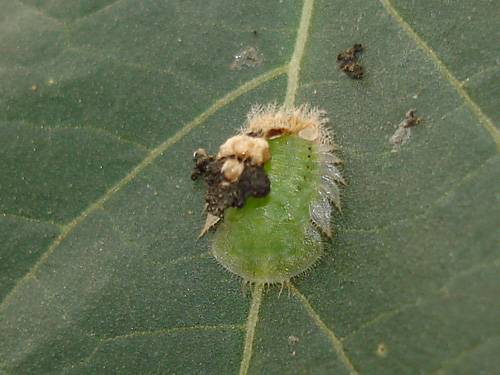
Very attractive, isn't it! But certainly not as attractive as the adults, which have the advantage of being gold and shiny.
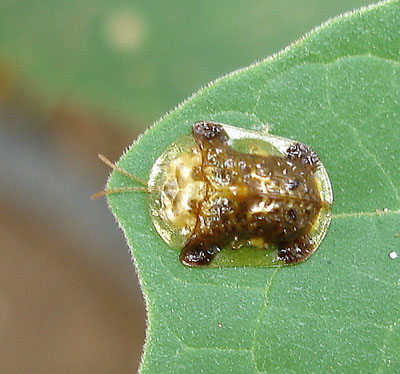
The fun I've had with these guys has been well worth all the small holes in my datura plants. Unfortunately, I noticed yesterday that I also have several young Manduca caterpillars now. Manduca are voracious during their last instar, and can easily eat an entire plant down to the ground. I may decide to save my plants and bring them in to the lab (where they can grow fat on lab diet and maybe participate in some pollination behavior studies).

This is one of our 8-inch flowers that bloomed last week.
Manduca sexta hawkmoths are one of the main pollinators of the plant as adults, and one of the main herbivores as caterpillars. I could go on in detail about this interesting interaction (after all, it's one of the main research focuses in our lab), but instead I thought I'd write a little bit about another peculiar herbivore I found on the datura in my yard.
What could this be?

I must admit that even with my background in insects, I was puzzled when I first saw them. Here's another shot. The green creature is holding a dark, crusty object up as a shield, quickly blocking me as I poke it with a piece of grass.

The answer is that these are Tortoise Beetle larvae (family Chrysomelidae, subfamily Hispinae.) The larvae use special appendages on their hind end to hold an 'umbrella' of excrement and shed skin above their bodies. They use this shield to quickly block predators like ants and biologists with pieces of grass.

I was very curious to find out what the pupal stage of these bizarre creatures would look like. I waited, and this is what I found:

Very attractive, isn't it! But certainly not as attractive as the adults, which have the advantage of being gold and shiny.

The fun I've had with these guys has been well worth all the small holes in my datura plants. Unfortunately, I noticed yesterday that I also have several young Manduca caterpillars now. Manduca are voracious during their last instar, and can easily eat an entire plant down to the ground. I may decide to save my plants and bring them in to the lab (where they can grow fat on lab diet and maybe participate in some pollination behavior studies).

2 Comments:
Hi Michelle - Thanks for commenting on the datura on my web site. I couldn't find an email address for you, so I'm responding here. I'm correcting my post to Datura stramonium, since, as you pointed out, the flowers I photographed have purple centers. I'm so happy to have found your wonderful blog. I didn't know about it before. Fascinating, and you're an amazing photographer. I'll be putting it on my blogroll immediately. All the best ...
Plant America Nursery
Keep america green
Post a Comment
<< Home